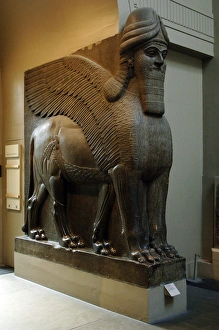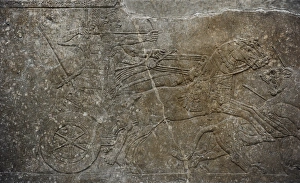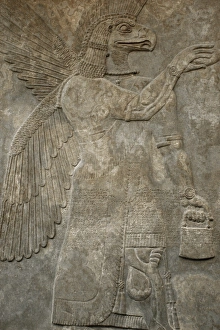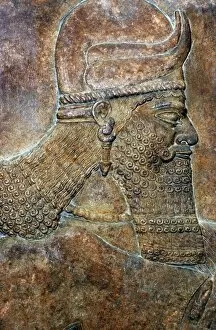Ashurnasirpal Collection
"Ashurnasirpal: The Mighty Assyrian King and his Magnificent Art" Step into the ancient world of Mesopotamia as we explore the captivating reign II
All Professionally Made to Order for Quick Shipping
"Ashurnasirpal: The Mighty Assyrian King and his Magnificent Art" Step into the ancient world of Mesopotamia as we explore the captivating reign II, an influential Assyrian king. This statue depicts him in all his glory, a symbol of power and authority that ruled over vast territories. Intriguingly, another masterpiece from this era is the statue of a winged lion with a human head found in Nimrud. It showcases the artistic prowess of Neo-Assyrian civilization, blending animal and human features seamlessly. Mesopotamian art comes alive through relief panels depicting various scenes from Ashurnasirpal's reign. One such panel portrays the king alongside his trusted eunuch, highlighting their close bond during c. 883-59 B. C. , crafted meticulously using gypsum alabaster. The presence of supernatural figures adds an air of mystique to these reliefs. A winged genius stands tall, representing divine protection bestowed upon Ashurnasirpal's kingdom during his rule (c. 883-859 BC). Its intricate gypsum details leave us awe-inspired. Unveiling yet another treasure is a remarkable statue discovered within a temple at Nimrud - none other than King Ashurnasirpal himself. This artifact serves as a testament to his grandeur and religious significance during c. 883-859 BC. Guardians played an essential role in protecting royalty, evident in relief panels featuring both guardian spirits and eunuchs by Ashurnasirpal's side (c. 883-59 B. C. ). These gypsum alabaster carvings reveal their loyalty and dedication to their ruler. Supernatural beings take center stage once again with depictions of eagle-headed figures exuding power and strength (c. 883-59 B. C. ). Their presence signifies divine intervention within the realm governed by Ashurnasirpal II.














